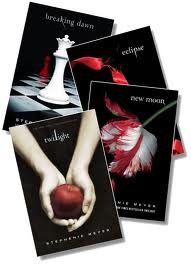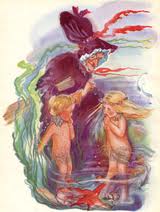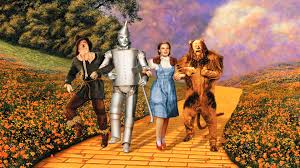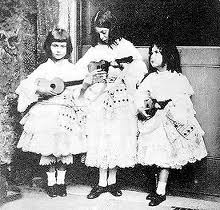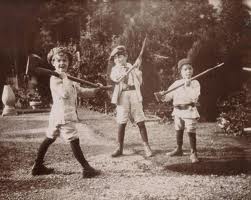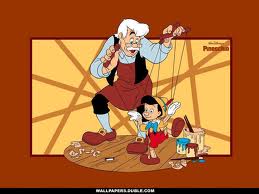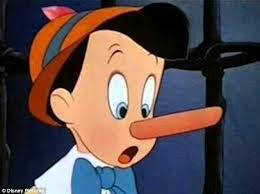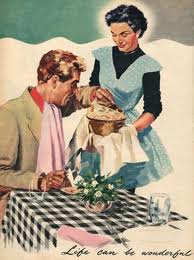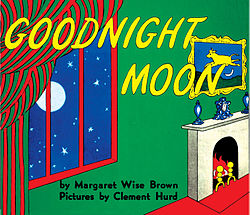If you are wondering how to cite from Kindles and other electronic devices that do not have page numbers, the link below is from Purdue Owl and tells you what to do.
Children Do Grow Up
Something that struck a chord with me with this weeks’ reading of A.A. Milne’s The Complete Tales of Winnie-the-Pooh and The House At Pooh Corner, is how different a character Christopher Robin is from Peter Pan. Also, please note that the Peter Pan that I will be referencing is the Peter from Peter and Wendy.
Within these novels we see two young boys who live in a world filled with fantasy and magic. Both boys have a band of merry friends and are somewhat seen as the leaders within there groups. They seem to be the problem solvers and decision makers when questions are asked and decisions need to be made. Both Christopher Robin and Peter Pan enjoy going on adventures with their friends and exploring.
However, there are numerous differences between Christopher Robin and Peter Pan. One contrast is education. Peter Pan has fled to Neverland where he lives without any schooling or education, but Christopher Robin spends his mornings getting an education and even teaches his friends in the Hundred Acre Woods some letters and spelling.
Another difference is quite possibly the most important difference between the two boys. Peter does not wish to grow up at all and even goes so far to refuse to do so. Christopher Robin does not seem to wish to grow up but he also understands that this is something that must occur. He spends the time to say goodbye to Pooh and to ask him to never forget him and his pledge to return to their enchanted place.
The idea of growing up can be disillusioning to children but it is a practical idea and Milne has taken the time to show how growing up is inevitable but at the same time if you maintain a desire to remain youthful you can.
Imitation is the sincerest form of flattery?
This week a topic that has struck me as interesting is the concept of borrowing and/or being inspired by other authors. In Edith Nesbit’s Five Children and It we see lots of references to other stories as well as general plot lines that she borrows from other authors. The Last of the Mohicans is used to inspire the children to wish for Indians to exist. Even though Nesbit’s works are filled with borrowed ideas and she is referred to as “the great borrower” does that make her work any less original. Nesbit herself is said to have been a source of inspiration for many authors, including C.S. Lewis. J.K. Rowling herself has been quoted as saying that she pulled inspiration for others authors and Greek mythology. Most fantasy authors will say that J.R.R Tolkien was there primary source of inspiration and that without his land of Middle Earth they would not have been able to do what they do. Having seen all these examples I think it is pretty acceptable to say that it is all right for authors to borrow or look towards these pioneers in their fields since without these precursors in their particular genre they would not have written their own works.
Having said this though I would like to examine the world of Fanfiction. Fanfic is when writers… aspiring writers? … use others movies, books, video games, etc. to further the story that has been created. For this blog I explored some Fanfiction sites and there is an enormous amount of stories ranging from topics about an alternate ending to The Hunger Games to stories about the children of the Golden Trio in Harry Potter. Some of the stories are lackluster continuations or alterations while others seem to have nothing to do with the original text except for the character names and world. Since I am not a Fanfiction reader I can only assume the spectrum that truly exists on these sites. However, I do feel I can make an opinion about how I feel towards the idea of Fanfiction, which would be to let them do it. These sites are huge and have such a large fan base that perhaps it is not a bad thing to let these people continue on a little longer in these fictional worlds they love. On the other hand though I do think that it is important to consider how the author’s feel about Fanfiction. George R.R. Martin the author of the series A Song of Fire and Ice has said how much he detests Fanfic and how he feels it is plagiarism to an extent. I would normally think he is overreacting but with recent events that have gone on I think perhaps he may have a point. Stephanie Meyers’ Twilight Saga was the inspiration for one Fanfic writer’s stories. E.L. James’ has recently gained the spotlight for her trilogy Fifty Shades of Grey, which is a novel version of a Fanfic story she has based off of Meyer’s Twilight series. This seems to be a little to close to copying someone else’s works for me. Which raises the question, where is the line between inspiration and direct imitation?
Lewis Carroll is but a dream?
Within Lewis Carroll’s Through the Looking Glass we see again several instances of logic. Carroll prompts his readers to ponder what things actually mean in this text by crafting a world where things are not as they may appear. This hold true to Lewis Carroll’s life as well, Virgina Woolf has stated that “we think we have caught Lewis Caroll; we look again and see an Oxford clergyman, We think we have caught the Reverend C.L. Dodgson, we look again and see a fairy elf” (Woolf, 1948).
Within the text we see Tweedle Dee and Tweedle Dum tell Alice the story of the walrus and the carpenter and the oysters with the end results of the oyster being devoured by the walrus and the carpenter not getting any. This causes Alice to feel sorrow for the carpenter and the oysters. However, the Tweedles caution her against her sympathy since the carpenter’s intent was to do the same. Also, Alice enters into the woods where things have no names and happens upon a deer. The deer does not who she is either or that Alice is a human. When they come upon a clearing their clarity returns and the deer runs from Alice frightened. Once again confusion has occurred. Alice and the deer both had less fear when they did not know themselves or what the other was. This is a contrary notion to people thinking they would become more scared if they were to forget who they were.
The Tweedles also have Alice wonder what would happen if the Red King were to awaken from his slumber. They believe she would disappear entirely because they think she is what he is dreaming of and nothing more. As readers we are under the assumption that Alice is the one who is dreaming of some sort and so it would be her that should awaken and have the Red King disappear. This concept of Alice’s dream leads me to the ending of the novel when Carroll questions what exactly it is that has occurred. Even Alice herself does not which is the case once she has returned home. She does not know if she was dreaming or if it was the King. Carroll frames the last line of prose with this question, “Which do you think it was?” Carroll has ended his work in the same trend that he wrote this story.
Much of what Carroll appeared to be was also different. Lewis Carroll conjures up ideas of a man who loved writing, the fantastical, and logical nonsense. He was innovative with the characters he created while also being very meticulous in his use of math and logic within the stories. We also see a love and fondness for young girls within his texts. This love for “child friends” was also a commonality for Carroll’s alter ego, mathematician and educator Charles Dodgson. He taught young boys and yet he hated them, much preferring the company of young girls. He was a clergyman but never took his vows. Dodgson wrote under the penname of Lewis Carroll though if he was written a letter addressed to the name Carroll requesting an autograph for one of his Alice stories, he would throw away the letter. Even his love for young girls is a confusion. Was it a sexual love or did children hold a purity Carroll sought? Or perhaps Carroll liked young children so much because they did not make the social demands upon him that adults did. This multifaceted man shows us that his works of fiction are a mirror for himself. Much like his books Carroll’s life leads us wondering what was what in his life. Regardless, we are left with stories that continue to delight us as children and inspire us as adults. Woolf sums it up nicely, “Many great satirists and moralists have shown us the world upside down, and have made us see it, as grown-up people see it, savagely. Only Lewis Carroll has shown us the world upside down as a child sees it, and has made us laugh” (Woolf, 1948 ).
*Woolf, Virgina. Moment and Other Essays. 2nd ed. 1948. eBook.
The Ultimate Puppet
Within Carlo Collodi’s The Adventures of Pinocchio we encounter a wooden marionette, which has been carved to resemble that of a young boy. This puppet goes by the name Pinocchio and was carved by Gepetto out of magical wood. Since Gepetto is who gives Pinocchio a “body” which allows him to become animated and he can move and speak all by himself now. Thus, it is established that Gepetto is now Pinocchio’s father. Pinocchio is not the marionette that Gepetto had originally hoped to create but instead becomes more like a naughty little boy. Therefore, his hopes for a source of income quickly become something he is financially dependent for.
There are many takes on what the purpose of Pinocchio is. Most of the time it is believed to be a cautionary tale to warn children, especially boys, what can happen when one is naughty. The fact that there are no girls or women within the text, except for the Blue Fairy who holds a very different role. This coupled with other elements within the story have given some psychoanalysts the idea that this novel is very Freudian and we see the Oedipus Complex portrayed through Pinocchio. Some critics believe that the lack of girls/women, and the “phallic” nose directly reference the underlying homosexuality within the text. Contrary to this idea is that many of the Italian critics seemed very anti-Freudian and they decidedly ignore the “phallic nose” and instead focus on the idea of “the innocence of childhood and by the immaculacy of the Virgin Madonna-Fairy-Godmother” (Stone, Pinocchio and Pinocchiology).
I, however, am more apt to agree with the psychologist view of the story of Pinocchio and his father, which states that, “and see the real good boy as the puppet” (Stone, Pinocchio and Pinocchiology). Pinocchio while a marionette is his own person. He makes mistakes and tries to do what he is told. However, to be changed into a real life, flesh, breathing young boy he must obey all that he is instructed to do. He must conform to all of the instructions he is given by Gepetto, the Blue Fairy, and the other adults he encounters. Thus, by achieving his wish to be a real boy he sacrifices all his abilities for free thinking actions.
Source: STONE, JENNIFER, Pinocchio and Pinocchiology, American Imago, 51:3 (1994:Fall) pages 329-331
Introduction
My name is Joanna Klager and I am entering my final semester here at the University of Florida. I double majored in English and Linguistics with a TESL focus. I am in love with the outdoors, hiking, climbing, camping, canoeing, skiing, and sand volleyball are among some of my favorite activities. However, living in Florida can make hiking and climbing pretty difficult so in an effort to get out of the rock gym for a while I spent the summer in North Carolina teaching rock climbing to young girls at a summer camp. Being at summer camp and not having the ability to get books whenever I wanted I began to borrow books from the campers. They all bring about ten with them to camp. This had me reading books that I had not read in a very long time. I also decided to jump on the Hunger Games bandwagon, great decision.
I had never taken a Children’s Literature class before but with my renewed enjoyment in these sorts of books I decided to take a look in to taking one. The syllabus looks absolutely lovely and I do not know where to start on what I am most excited about. Alice’s Adventures in Wonderland, Winnie the Pooh, The Princess and the Goblin, and The Secret Garden are among the ones I am happy we are reading. To narrow it down a little further I am looking forward to Lewis Carroll’s works. My boyfriends Grandfather is a huge fan of Carroll and is even a part of the Lewis Carroll society which gathers every year in England for a dinner and reading of The Hunting of the Snark. I was lucky enough to spend a portion of the summer with him and he taught me a lot more about Carroll. I am very interested in being able to revisit these works and see what new things I can take away from the novellas. Also, The Princess and the Goblin is of great excitement for me because not only do I love this book but I also always enjoyed the film version and am excited to see how my readings/viewings of these texts have evolved with my age.
I think some of my favorite “Children’s Literature” reads would have to be A Little Princess, The Phantom Tollbooth, To Kill a Mockingbird and, Little House on the Prairie. My favorite picture book is definitely Goodnight Moon and If You Give a Mouse a Cookie.
The concept of “Children’s Literature” to me entails reading anything that would spark the imagination of child. I also think it entails reading novels which are written with a difficulty appropriate for a child to read. The range of Children’s Literature should in my opinion be vast and not limited to the novels that appear on a school reading list. The Golden Age emerged from Greek mythology and referred to the “Ages of Man.” According to the Greeks the Golden Age was the period of time where things were most prosperous and eventually would lead to the Iron Age, which is the period of decline. I think the concept of the “Golden Age” for literature is a period of time when people believed things were a little better for novels. It was during this time that noteworthy fiction was being written. Writers were creating utopian fantasies in their works as a means of preservation for childhood. I do not believe that this means that the only noteworthy texts for children have already been written, I also do not think we should put limitations on who the readers of these texts should be.




